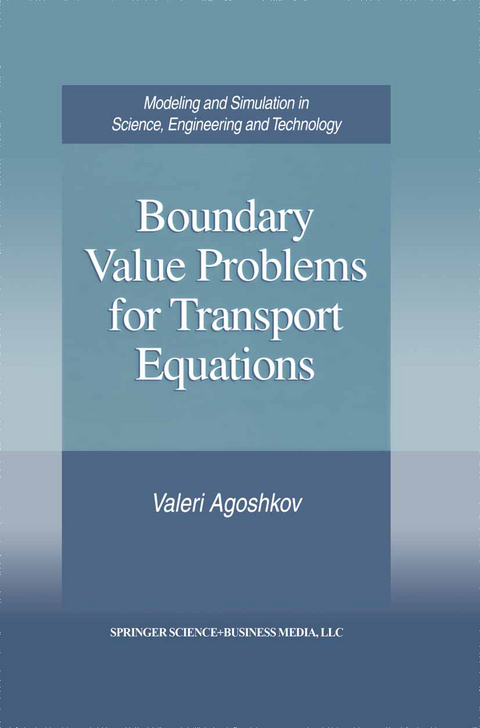
Boundary Value Problems for Transport Equations
Springer-Verlag New York Inc.
978-1-4612-7372-1 (ISBN)
In the modern theory of boundary value problems the following ap proach to investigation is agreed upon (we call it the functional approach): some functional spaces are chosen; the statements of boundary value prob the basis of these spaces; and the solvability of lems are formulated on the problems, properties of solutions, and their dependence on the original data of the problems are analyzed. These stages are put on the basis of the correct statement of different problems of mathematical physics (or of the definition of ill-posed problems). For example, if the solvability of a prob lem in the functional spaces chosen cannot be established then, probably, the reason is in their unsatisfactory choice. Then the analysis should be repeated employing other functional spaces. Elliptical problems can serve as an example of classical problems which are analyzed by this approach. Their investigations brought a number of new notions and results in the theory of Sobolev spaces W;(D) which, in turn, enabled us to create a sufficiently complete theory of solvability of elliptical equations. Nowadays the mathematical theory of radiative transfer problems and kinetic equations is an extensive area of modern mathematical physics. It has various applications in astrophysics, the theory of nuclear reactors, geophysics, the theory of chemical processes, semiconductor theory, fluid mechanics, etc. [25,29,31,39,40, 47, 52, 78, 83, 94, 98, 120, 124, 125, 135, 146].
1 Problems and equations of transport theory.- 1.1 Some notions of transport theory.- 1.2 Basic transport equations.- 1.3 Boundary conditions and statements of problems.- 1.4 Typical boundary value problems.- 1.5 Integral equations of transport theory.- 1.6 Adjoint problems.- 1.7 Correctness of statements and need of new functional spaces.- 2 Functional spaces, existence of traces, and extension of functions.- 2.1 Spaces Hp1(? ? D). Trace existence and extensions of functions.- 2.2 Spaces Hp1[-1,1] × (0, H). Trace existence and extensions of functions.- 2.3 Spaces of periodic functions V and Hpt + ?, k Properties of operator ?.- 2.4 Spaces Hpt + ?, k(? × D). Existence of traces and extensions of functions.- 3 Variational statements and generalized solutions of transport problems.- 3.1 The first variational problem. Necessary and sufficient conditions of solvability in Hp1.- 3.2 The second variational problem. Estimates of boundary values of solutions.- 3.3 General approach to symmetrization. The third variational problem. Existence of solutions.- 3.4 Reflection operators and fundamental functions.- 3.5 Existence of solutions for periodic problems.- 4 Regularity properties of generalized solutions.- 4.1 Regularity of periodic solutions in a plane-parallel geometry.- 4.2 Regularity of periodic solutions in three-dimensional geometry.- 4.3 Regularity for the boundary value plane-parallel problem.- 4.4 Three-dimensional boundary value problems.- 4.5 Regularity of solutions in (x, y)-geometry.- 5 Applications to analysis of transport problems and numerical algorithms.- 5.1 Operators L-1S, SL*-1.- 5.2 Fundamental functions of reflection operators and inverse problems.- 5.3 Convergence of domain decomposition methods for transport problems.- 5.4 Some applications fornumerical algorithms.- 5.5 Energy dependent problems.- 5.6 Justification of a perturbation algorithm for a nonlinear transport equation.- Appendix. Main notations and functional spaces.
| Reihe/Serie | Modeling and Simulation in Science, Engineering and Technology |
|---|---|
| Zusatzinfo | XVII, 278 p. |
| Verlagsort | New York |
| Sprache | englisch |
| Maße | 155 x 235 mm |
| Themenwelt | Mathematik / Informatik ► Mathematik ► Analysis |
| ISBN-10 | 1-4612-7372-2 / 1461273722 |
| ISBN-13 | 978-1-4612-7372-1 / 9781461273721 |
| Zustand | Neuware |
| Haben Sie eine Frage zum Produkt? |
aus dem Bereich


